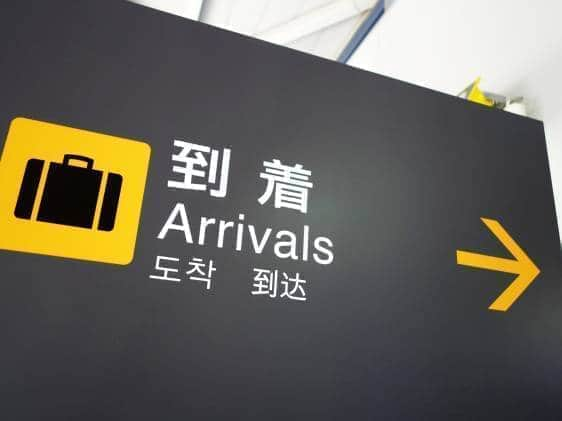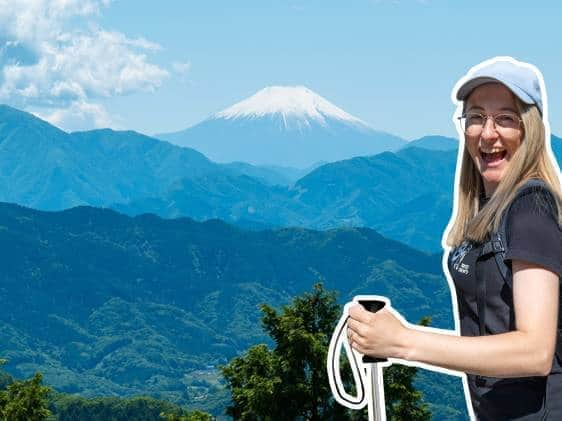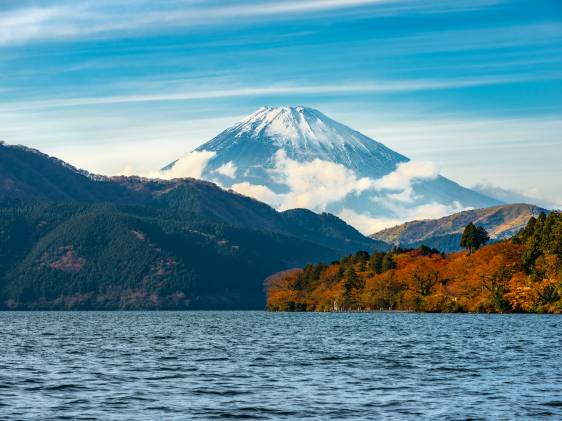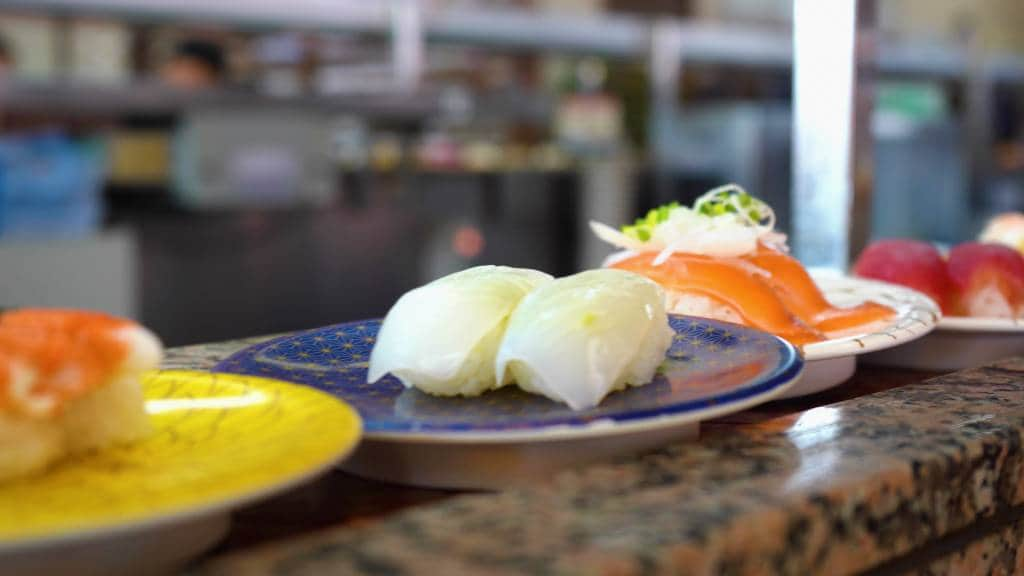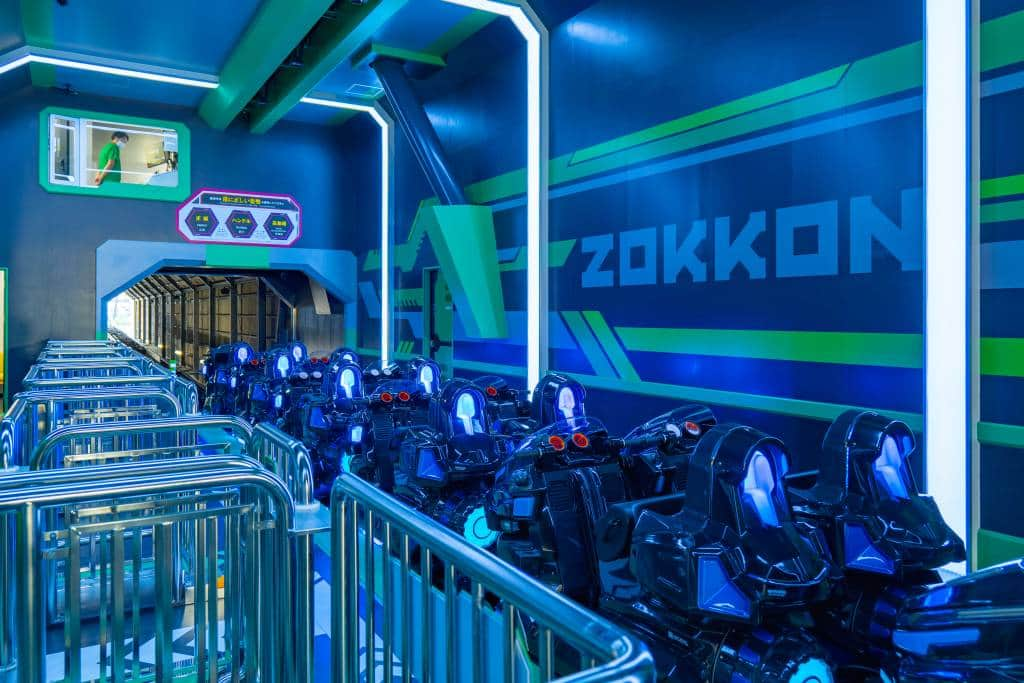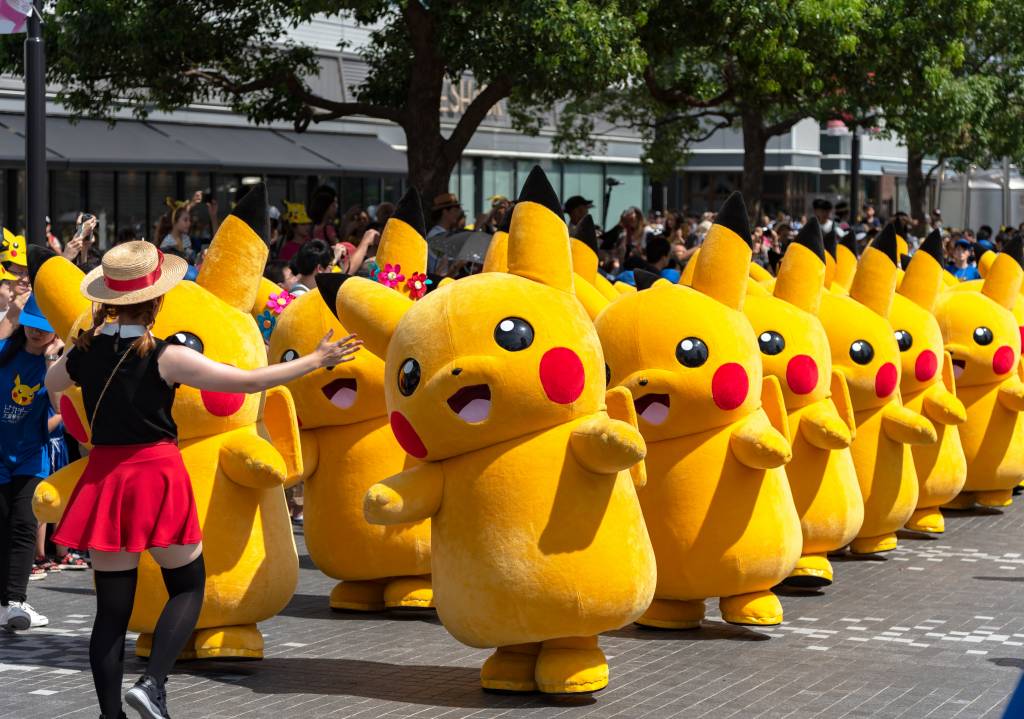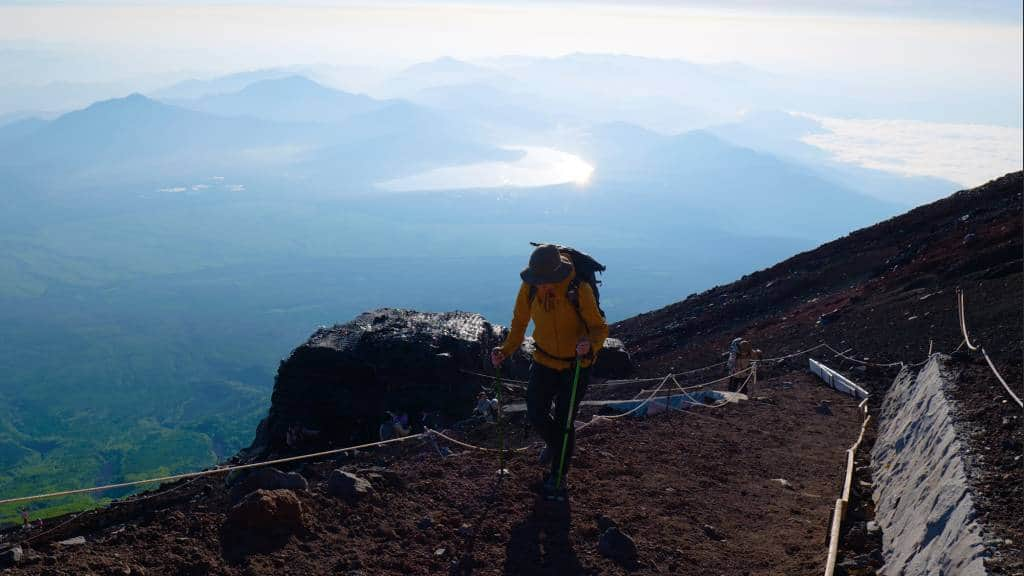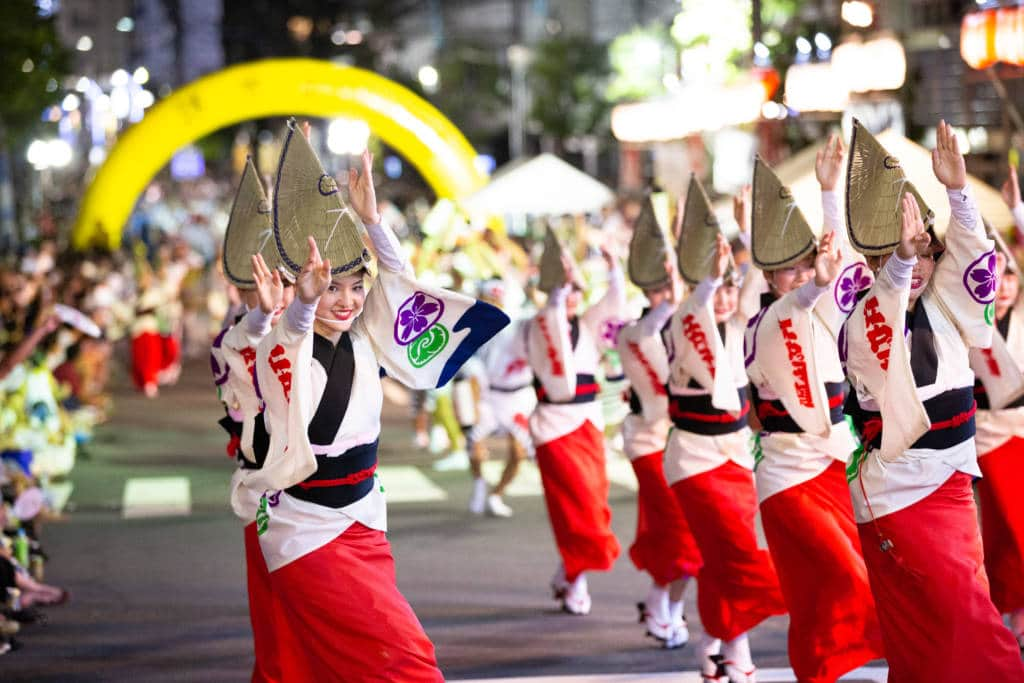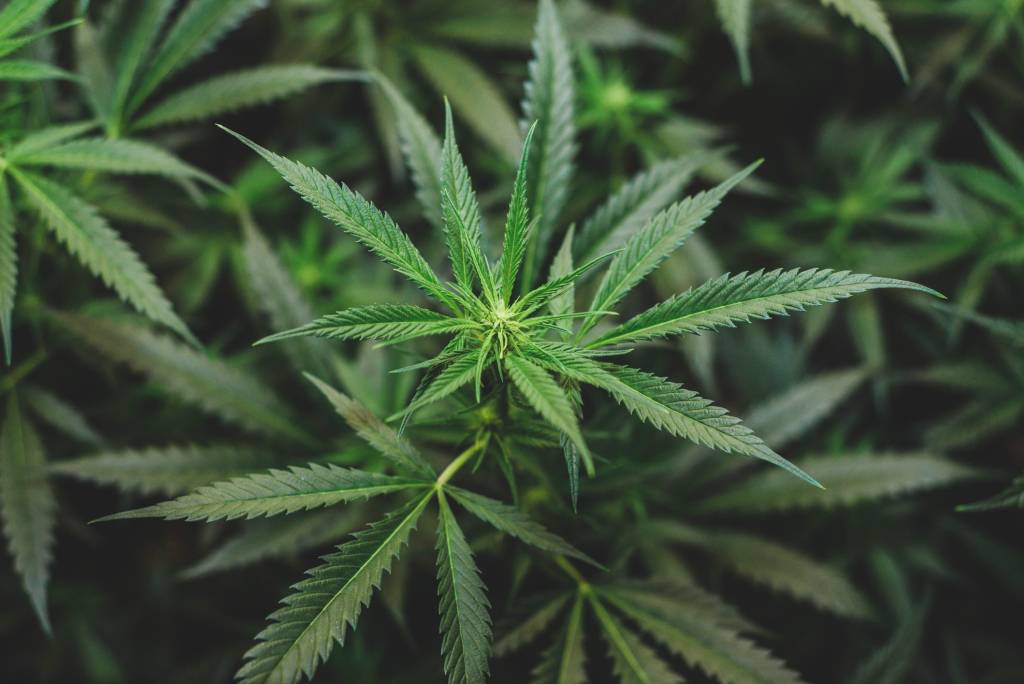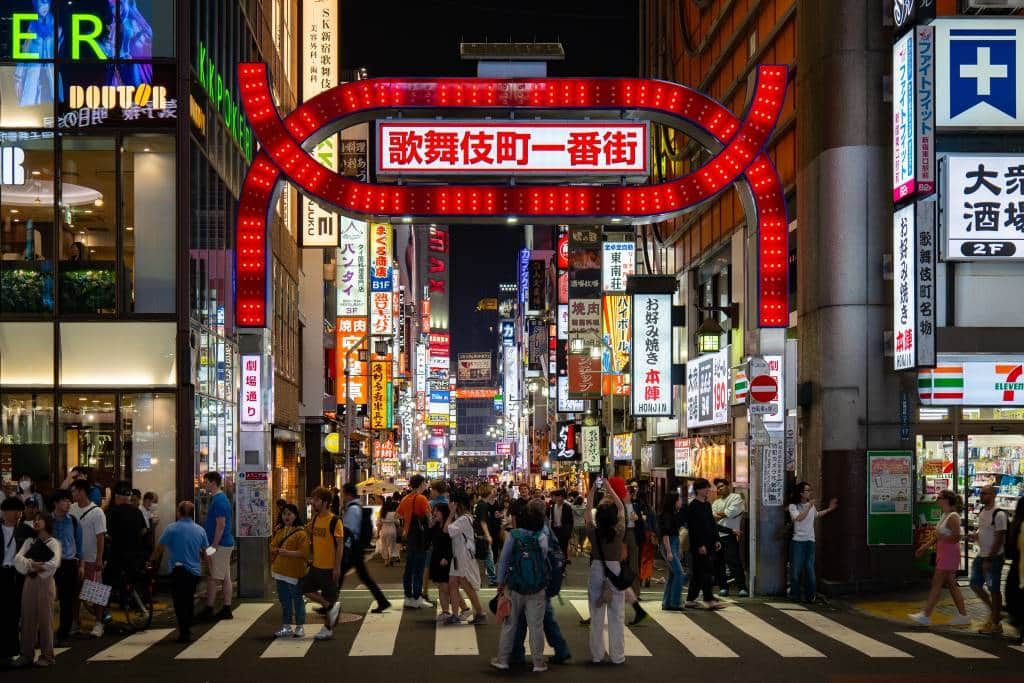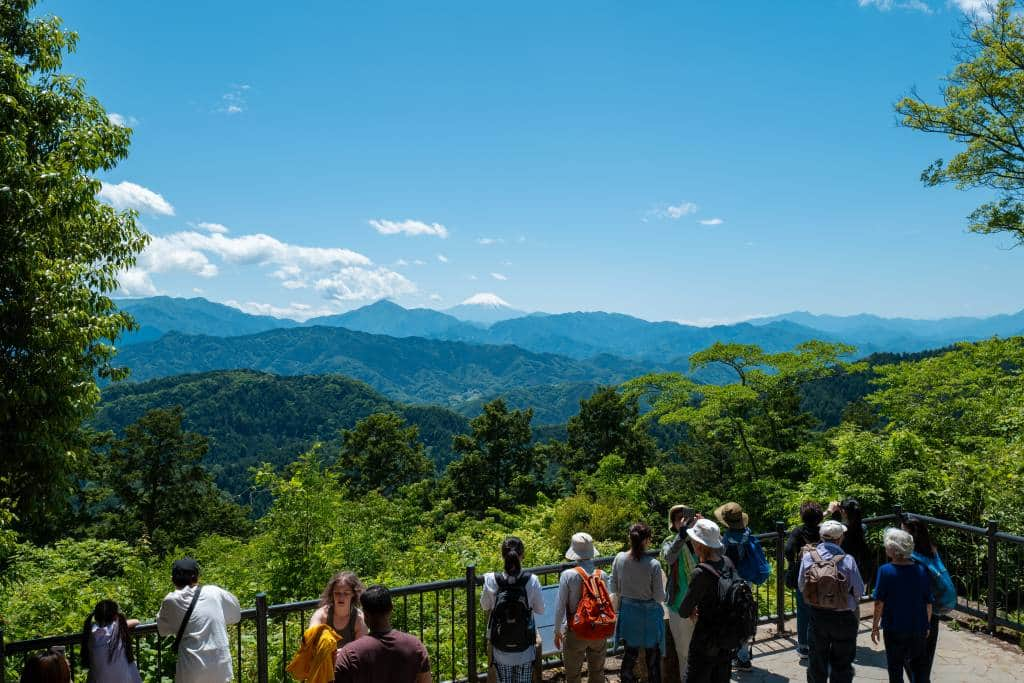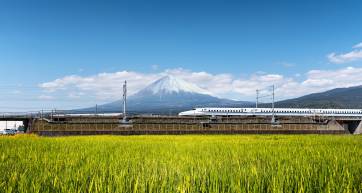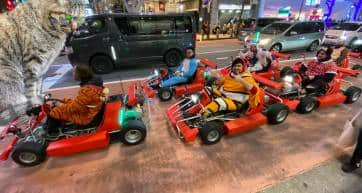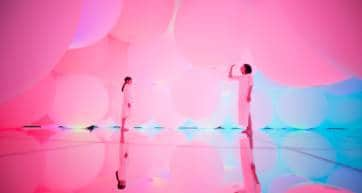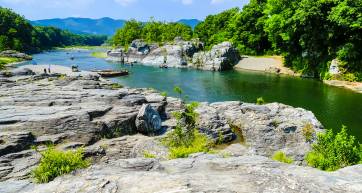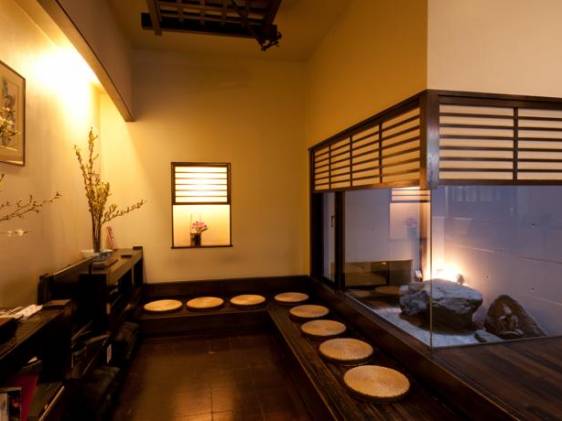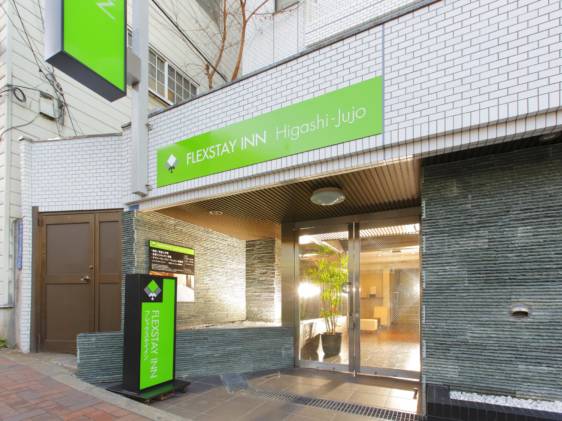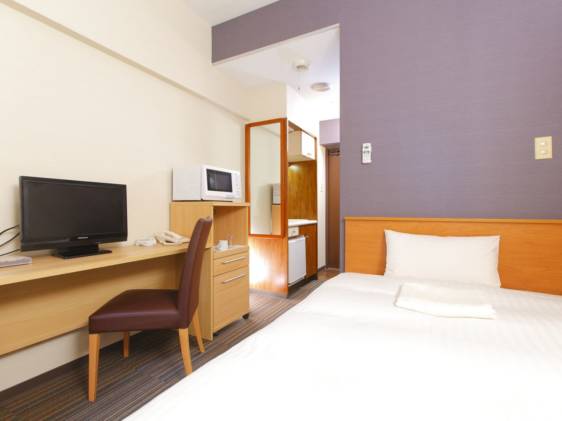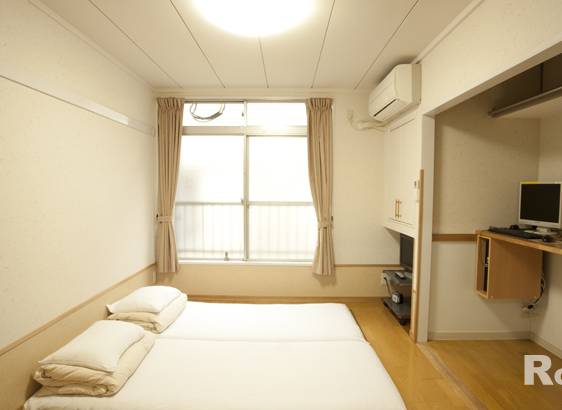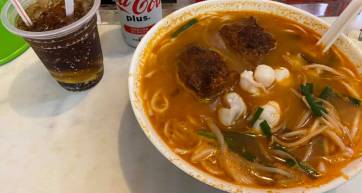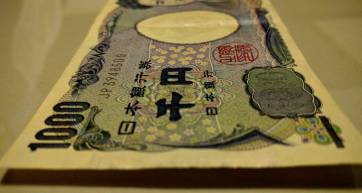Grab your camera, pack a picnic, and prepare for your anime moment under the falling petals. We’ve put together a list of the best Tokyo cherry blossom viewing spots.
Some people prefer busy places with a lively atmosphere, while others prefer a quiet, relaxing stroll under the cherry blossoms in Tokyo — so we have both covered. We’ve divided this list into the most popular parks and gardens — promising crowds, food stalls, and plenty of picnickers — and quieter sakura spots, which will still have people but not quite as many.
Note: Over the last few years, many cherry blossom events have been canceled or scaled back due to COVID-19. This year we can report that most events are back! However, there are some restrictions here and there, and some spots won’t be having food and drink vendors again this year.
There are even a few super-chilled places at the end and some slightly outside of Tokyo. Keep in mind, though, that “secret” and “sakura” is basically an oxymoron. Tokyo knows and loves its trees, so if it’s pretty, people will pitch up.
Pro tip: If you’d like to see sakura in their spiritual home, you can take an overnight highway bus down to Kyoto. But Tokyo is pretty, well, pretty, too in cherry blossom season.
When do the cherry blossoms bloom in Tokyo?
For 2023, Japan Meteorological Corporation (JMC)’s most recent forecast for Tokyo puts first bloom on March 16th, with peak viewing around March 24th. This is a whole week earlier than usual!
Keep in mind that the forecasts are typically for the most common/popular variety of sakura, the Somei-Yoshino. There are actually dozens of different varieties of cherry blossoms, including some that bloom earlier or later than the common varieties. So if you won’t be here at peak time, don’t worry: we’ve got you covered.
Some sakura names to look out for when checking specific locations for cherry blossoms in Japan:
- Early-blooming sakura: Kanzakura, Kawazuzakura, Kanhizakura
- Late-blooming sakura: Ichiyo, Ukon, Kanzan, Shogetsu, Jugatsuzakura, Kikuzakura, Fugenzo
Regarding late-blooming sakura, you might see the term yaezakura, which refers to cherry blossom varieties with dense petals. These happen to bloom later than the “standard” Tokyo sakura that have five petals per flower.

How to enjoy hanami season in Tokyo
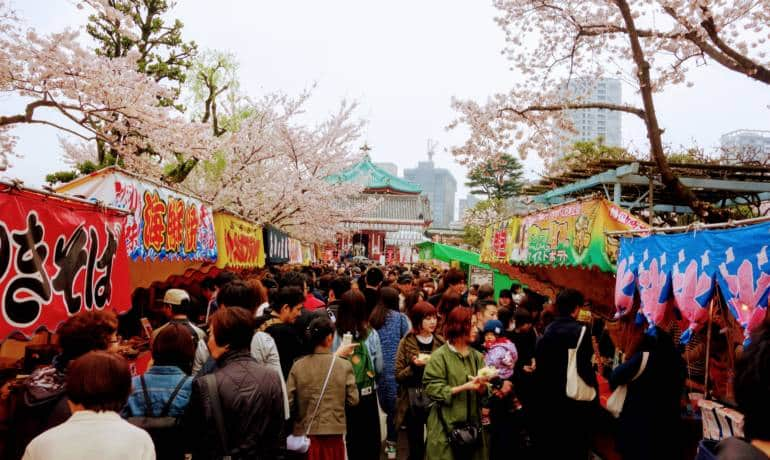
While it’s easy enough to stroll into a park, admire a cherry tree, and then go on your merry way, there are plenty of ways to get more into the spirit of spring.
What is hanami?
Hanami literally means “flower viewing.” It’s our favorite Japanese tradition (it’s a very cheapo-friendly one, too). You haven’t experienced Japan until you’ve had a picnic party under the sakura. This typically involve a blue tarp, snacks, and lots of drinks, and is done best in parks. Note that most gardens ban hanami, so check first. Also, see our guide to hanami in Tokyo.
More ways to hanami
Beyond the picnic, some other ways to appreciate the seaonal blooms include:
- Cherry blossom festivals: These provide food stalls, pretty lanterns, and even entertainment (sometimes). Held around peak blossom season, a sakura matsuri (cherry blossom festival) is perfect if you want a slice of the summer festival action a little earlier in the year.
- Yozakura: This refers to seeing the cherry blossoms illuminated at night — a different take on the Tokyo cherry blossom-viewing experience.
- Hikes: Your best chance of seeing some quiet cherry blossoms in their natural habitat is to head out into the mountains for a spring walk. Pack a picnic and you’ve got yourself the perfect day out.
Most popular places to see cherry blossoms in Tokyo
While they’ll be busy and filled with blue tarps as far as the eye can see, these places are popular for a reason. Whether they have the best trees, the nicest rivers, or the most picturesque boating lakes and cherry blossom tunnels, people flock to these spots — and there’s no shame in joining. The bonus of going to some of the busier locations is the lively atmosphere generated by hanami parties with colleagues and students, families having a day out, and people of all ages just enjoying the sakura bloom.
Ueno Park
FreeAbout a 5-minute walk from Ueno Station
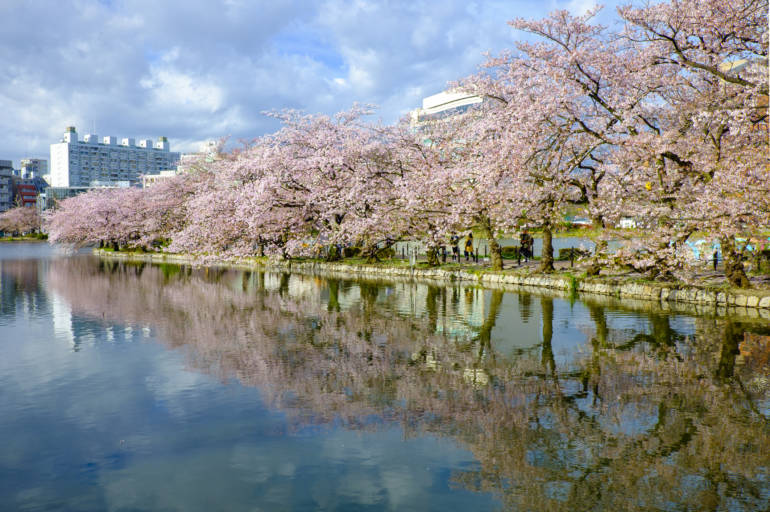
One of the most popular (and crowded) hanami spots in Tokyo, Ueno Park is where the sakura famously bloom a bit earlier. An estimated 800 cherry trees line the park’s central path, and people typically picnic on both sides, using blankets or tarps to claim whatever space they can.
If you time it right, you might be able to boat around the pond, too. Whatever you decide to do, our advice is to get there early, especially for picnics! Lanterns are strung up, so you can party on into the evening.
Find out what else there is to do in Ueno.
Shinjuku Gyoen
¥500Just a 1- or 2-minute walk from Shinjuku-gyoenmae Station or Sendagaya Station
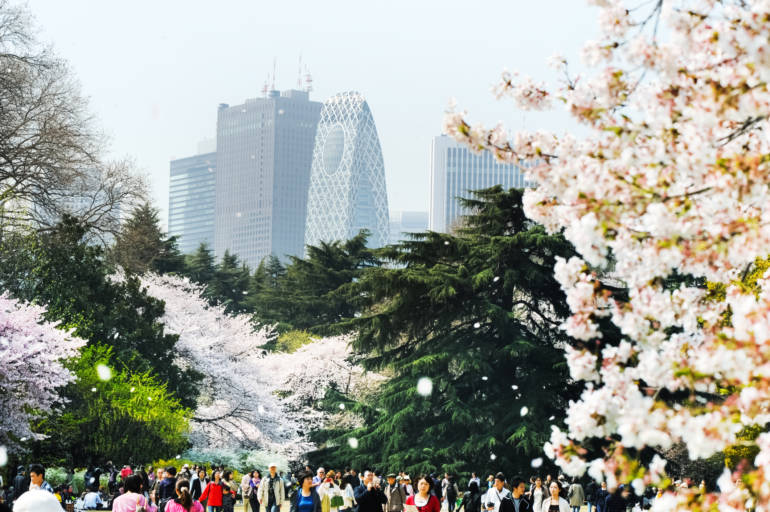
If you’re keen on somewhere a little more peaceful, this is it. There are around 1,300 cherry trees, which bloom at different stages. Shinjuku Gyoen is a spacious garden with nice big lawns and plenty of walking paths. This means that even if it’s crowded, you can still enjoy a chilled stroll under the sakura flowers. The atmosphere here is much less rowdy compared to most other parks.
Important note: For 2023, you will need to pre-register to enter the park on certain days (March 21, 25, 26, 31, April 1, 2, 8, and 9). You can book in English here.
Read up on what else there is to do in Shinjuku while you’re here.
Imperial Palace East Gardens
FreeLess than a 5-minute walk from Ōtemachi Station, Takebashi Station, or Nijūbashimae Station.

The Imperial Palace’s East Gardens are open to public viewing for free. Some people have picnics there, but it doesn’t exactly have a reputation for being a sakura picnic spot. Instead, the gardens’ size makes them suitable for a nice stroll. The sakura are a welcome touch of old Tokyo in contrast to all the concrete and glass of nearby modern Marunouchi, Tokyo’s business district.
Check out these other things to see at the Imperial Palace.
Chidorigafuchi and Kitanomaru Park
FreeLess than a 5-minute walk from Kudanshita Station
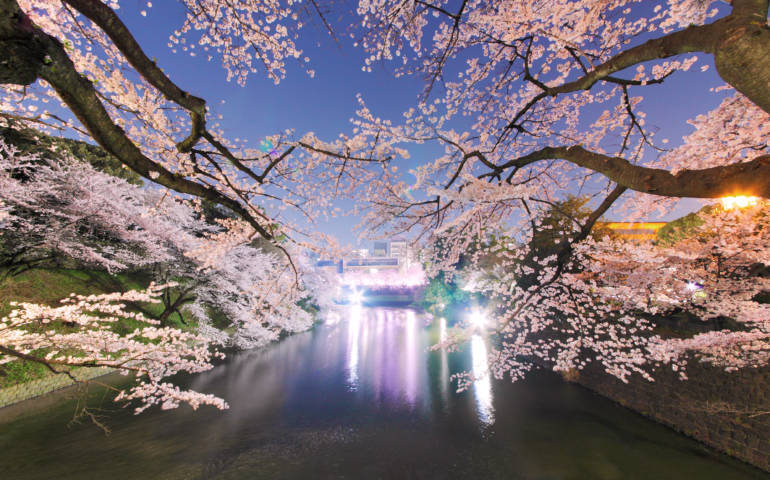
Chidorigafuchi is one of Tokyo’s most scenic sakura spots — and also a place where you can hop in a boat and row your date (or lazy friends) around an Edo-era moat (which is now part of the Imperial Palace grounds). If you’re wobbly on the water, you can mosey along the 700m-long footpath instead, ooh-ing and ah-ing your way through the tunnel of cherry blossoms.
The park next door is called Kitanomaru Park and, like the Imperial Palace’s East Gardens, is a place for quiet sakura viewing. The controversial Yasukuni Shrine, which also has loads of cherry blossoms, is nearby; despite its politically loaded status, it draws a lot of tourists during cherry blossom season.
Sumida Park
FreeJust a 1- or 2-minute walk from Asakusa Station
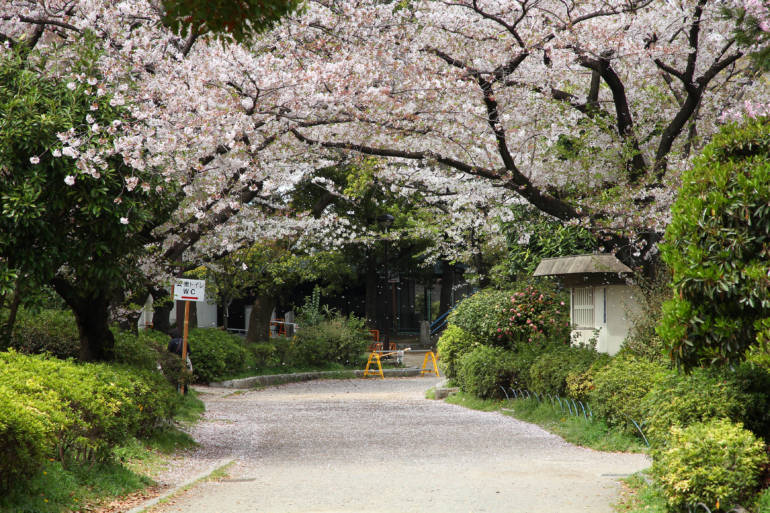
The area stretching from Azumabashi Bridge to Sakurabashi Bridge on the Sumida River is a super-famous cherry blossom viewing spot, and has been for centuries. More than 1,000 cherry trees line the river, making for great photo ops and picnics. You can also see Tokyo Skytree from here. Note that the area can get very crowded.
There is also the option to duck out and take a short cruise on one of the yakatabune (traditiional pleasure boats) that ply the Sumida.
Inokashira Park
FreeLess than a 10-minute walk from Kichijōji Station
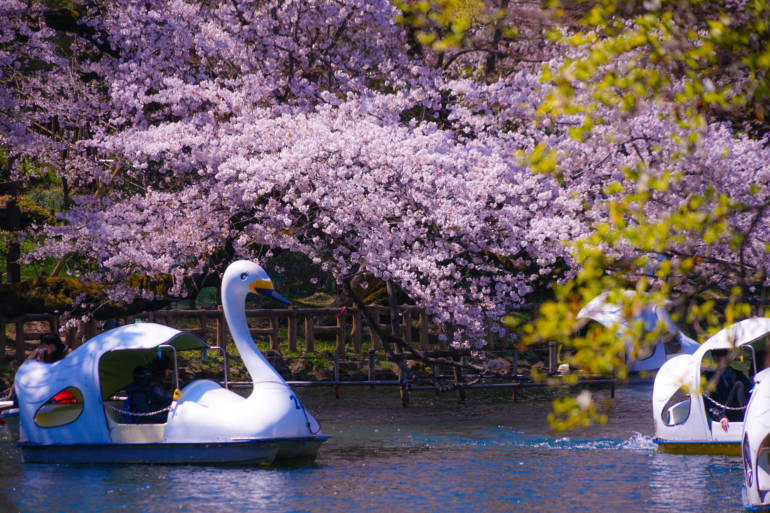
This park in Kichijōji, a suburban Tokyo neighborhood west of Shinjuku, is renowned for its beauty in spring. Approximately 500 cherry trees surround a central pond, and when the blossoms start falling, the sakura petals carpet the water in pink.
You can go boating while appreciating the scenery. The swan-shaped boats are a favorite among couples, but be warned: superstition says that couples who go boating in the park are doomed to break up. This is because Benzaiten — despite being the goddess of love — apparently has a jealous streak. Inokashira Park is dedicated to her, and she hates seeing couples being all lovey-dovey in it. If boating and/or breaking up is not your thing, you can have a cherry blossom picnic or see the blossoms from the park’s bridges.
Meguro River
FreeLess than a 5-minute walk from Ikejiri-Ōhashi Station, Meguro Station, or Naka-Meguro Station (each station is near a different part of the river)
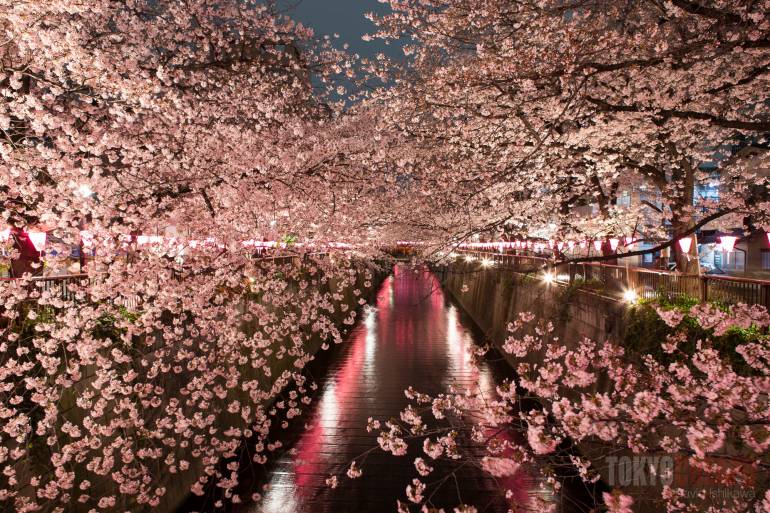
Several kilometers of the Meguro River are lined with more than 800 cherry trees, which make for a unique sight. (In Tokyo, at least — go to Kyoto if you want to see countless canals surrounded by cherry blossoms). This area is even more beautiful at night when the trees are lit up, during the Meguro River Cherry Blossom Festival. It’s a favorite date spot.
Pro-tip: For a unique experience, consider booking a river cruise along part of the Meguro-gawa. It costs ¥4,500 per person and can be booked online.
Learn more about yozakura — seeing the blossoms at night — and other nighttime hanami spots.
Yoyogi Park
FreeJust a 1- or 2-minute walk from Harajuku Station or Meiji-jingūmae Station

The very urban Yoyogi Park is known more for general gatherings and bazaars than its flora. That said, it has about 600 cherry trees, including an early blooming variety that’s a darker shade of pink than the Somei-Yoshino (the most common kind of cherry blossom you see in Japan and very pale).
Use our full guide to Yoyogi Park to help plan your outing.
Koishikawa Kōrakuen
¥300Less than a 5-minute walk from Kōrakuen Station or Iidabashi Station
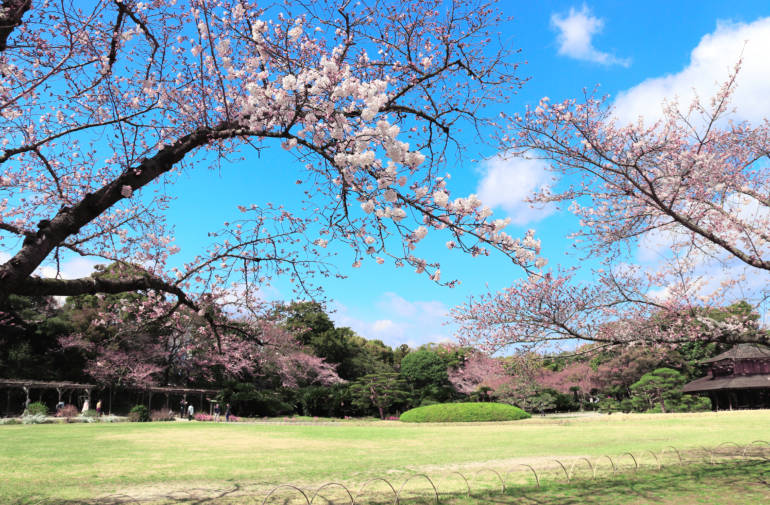
One of Tokyo’s oldest, this well-preserved garden is famous for weeping cherry trees, a special varietal. Koishikawa Kōrakuen is suited for scenic appreciation, not picnics (which aren’t allowed), but they do have a teahouse where you can enjoy some matcha.
Off-the-beaten-path places to see Tokyo sakura
These locations are not as well known, at least for international tourists. So if you want a (somewhat) less-crowded cherry blossom experience, consider adding a couple of these spots to your itinerary.
Shōwa Memorial Park
¥450About a 10-minute walk from Tachikawa Station
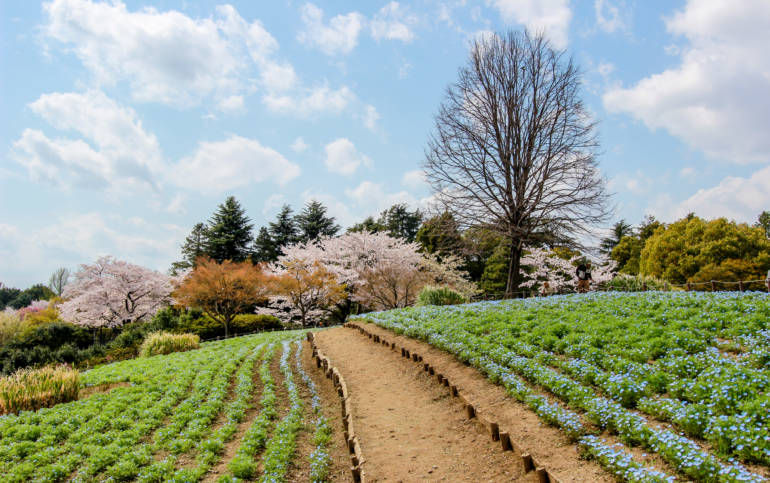
If you’re keen on getting out of Tokyo central, or miss the main sakura season by a few days, you can always check out Shōwa Kinen Park in Tachikawa, about 40 minutes by train from Shinjuku. It’s huge, and has 1,500 cherry blossom trees — you might see some daffodils and tulips, too.
A great way to explore the park is by renting a bicycle when you arrive. This costs adult/child ¥530/¥320 for a full day or adult/child ¥420/¥260 for a half-day. Read more about this and other things to do at Shōwa Kinen Park.
Asukayama Park
FreeLess than a 5-minute walk from Ōji Station and Asukayama Station
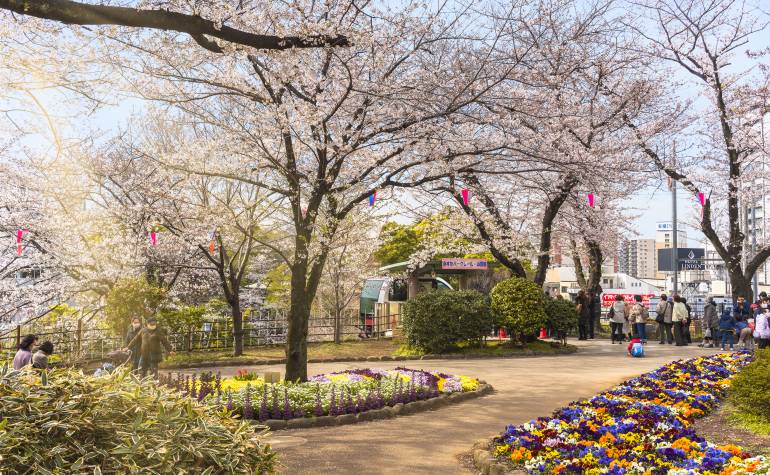
This hidden park’s hanami history goes back a long way — it’s been a favorite local spot since the Edo period. It has 600 trees and a cable car that goes from the entrance to the hilltop.
Yanaka Cemetery
FreeAbout a 10-minute walk from Nippori Station
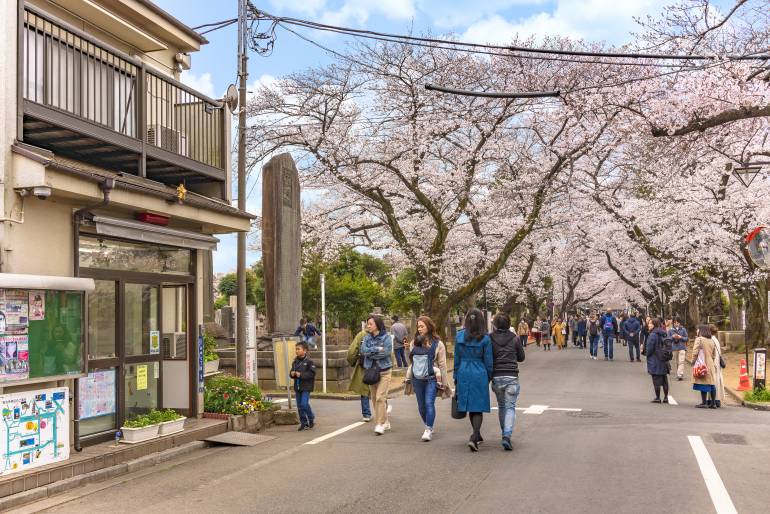
Flower viewing in a cemetery? That’s possible in Yanaka Cemetery near Ueno. The place has been relatively popular among locals for quite some time now. In fact, the main path leading to it is lined with cherry trees and aptly named Cherry Blossom Avenue.
Despite the image of cemeteries as places of gloom and solemnity, (some) people do have picnics here. But if you think about the symbolism behind the cherry blossom, it doesn’t seem too unusual — the short-lived sakura is a reminder of the transience of life, after all. Just be as respectful as possible if you decide to drop by this place.
Make a day out of it and see more of Yanaka.
Kasai Rinkai Park
FreeLess than a 5-minute walk from Kasai-Rinkai-kōen Station
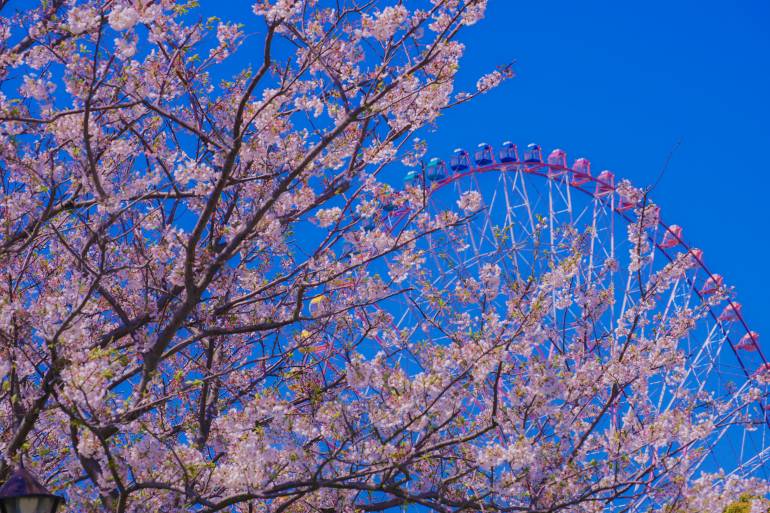
Kasai Rinkai Park is one of Tokyo’s largest parks, and just one stop away from Tokyo Disneyland. Its vast space and full slate of attractions (a Ferris wheel, a big aquarium, an observatory, a bird sanctuary…) make it an ideal location for family outings.
Mt. Takao
FreeAbout a 5-minute walk from Takaosanguchi Station
Why not take a day trip to the closest mountain to Tokyo? Less than an hour away from Shinjuku, Mt. Takao provides great views of the Kantō region and Mt. Fuji. In spring, those views can get even more picturesque with cherry blossoms framing the sights.
For more details about hanami at Takao and other such spots, check out our sakura hikes article.
Sotobori Park
FreeLess than a 5-minute walk from Yotsuya Station
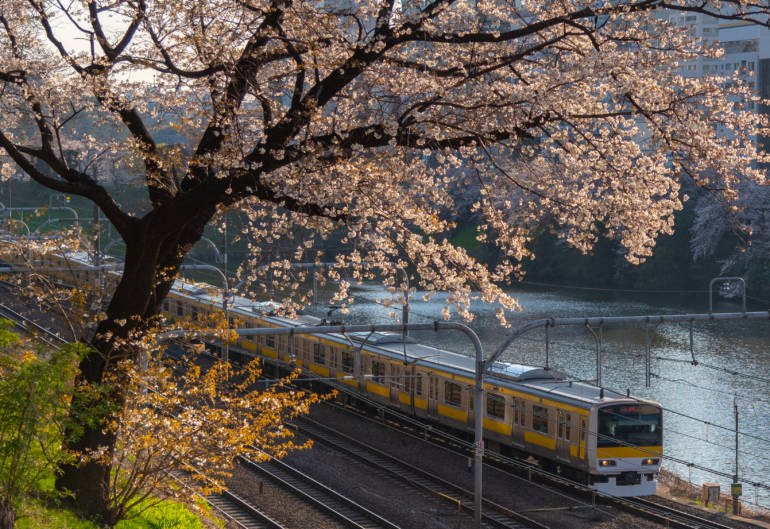
Between Ichigaya and Yotsuya stations, this thin stretch of park runs along the Kanda-gawa riverside. In spring, it becomes a cherry blossom-filled haven. The park is just over 2km-long, so perfect for a stroll, and features Edo Castle ruins, as well as around 700 Somei-Yoshino cherry trees. It gets busy — as lots of students fromm nearby Hōsei University have hanami parties here — but you might find the northside river path a little quieter.
Ōjima Komatsugawa Park
FreeLess than a 5-minute walk from Higashi-Ōjima Station
Mainly known for its recreation fields and castle-like structures, Ōjima Komatsugawa Park straddles the Kyūnaka River. As you may have learned, a river is a good sign for cherry blossoms in Japan. Once a marshland, the park is now home to around 1,000 cherry trees, nicknamed the Senbonzakura (and planted as a sign of regeneration). While this park may not be as popular as the more famous Tokyo sakura sites, you’ll still need to claim your pitch early if you’re planning a proper cherry blossom viewing party.
Hibiya Park
FreeJust a 1- or 2-minute walk from Hibiya Station or Kasumigaseki Station
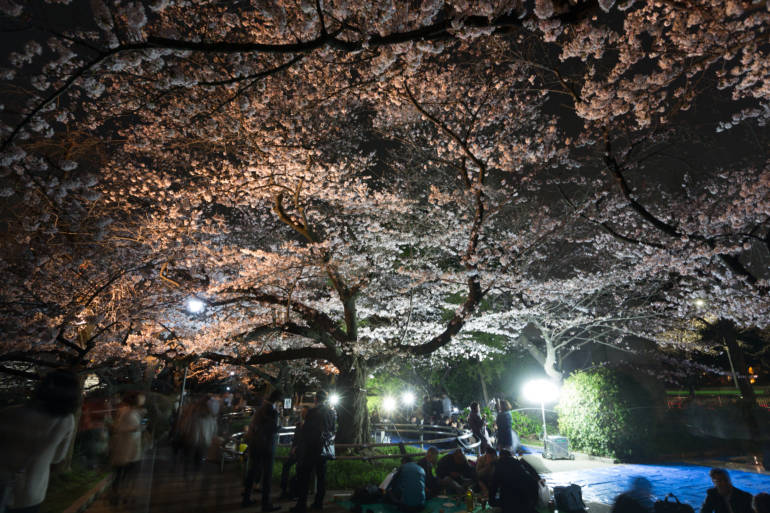
Near the Imperial Palace, Hibiya Park is 16 hectares of beauty — and as it’s not a major hanami spot, it’s great for the less gregarious Cheapo. The park precincts include the Shinkei and Kumogata ponds, a playground, and a number of Somei-Yoshino cherry trees.
Komazawa Olympic Park
FreeLess than a 10-minute walk from Komazawa-Daigaku Station
Before being opened to the public, this park was used as the second main venue of the 1964 Olympics. It’s a great open space filled with Somei-Yoshino cherry trees. There are around 200 mature trees in the park and many line the cycling route, meaning you can combine your blossom viewing with a relaxing cycle or run through tunnels of pink.
Kinuta Park
FreeAbout a 15-minute walk from Yōga Station
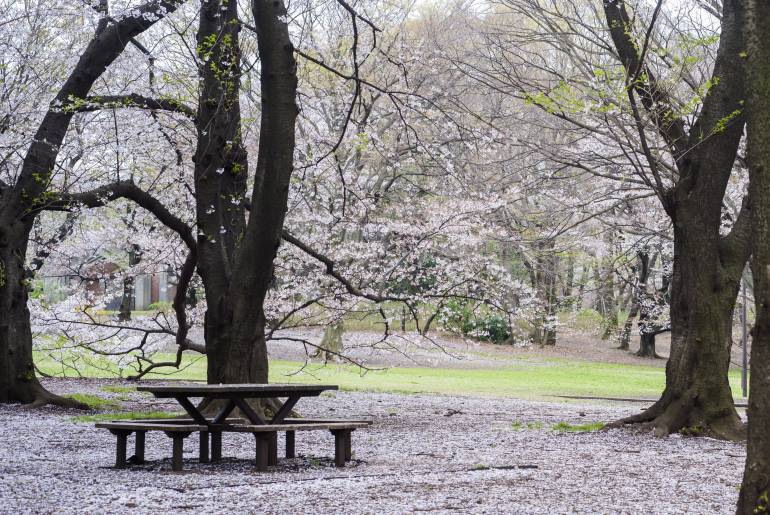
Way out in Setagaya, Kinuta Park has over 900 sakura trees including Somei-Yoshino, Yamazakura, and Yaezakura varietals. When you get your fill of the food stands, bird sanctuary, and kids’ playgrounds, amuse yourself by seeing whether you can spot telltale signs that the 80-year-old park had a past life as a golf course.
Hamarikyū Gardens
¥300About a 10-minute walk from Shiodome Station

Hamarikyu Garden is flanked by the gleaming spires of the Shiodome business district on one side and Tokyo Bay on the other. It’s also just a short walk from Tsukiji Outer Market.
This is actually one of Tokyo’s most famous gardens, so the few dozen sakura trees here are just one of the highlights. It has several seawater ponds, a teahouse, and a spectacular 300-year-old pine tree. If you’re in the area between February and the start of cherry season, go see the nanohana (rapeseed), one of Japan’s lesser-known spring blooms.
Rikugien Garden
¥300About a 5-minute walk from Komagome Station
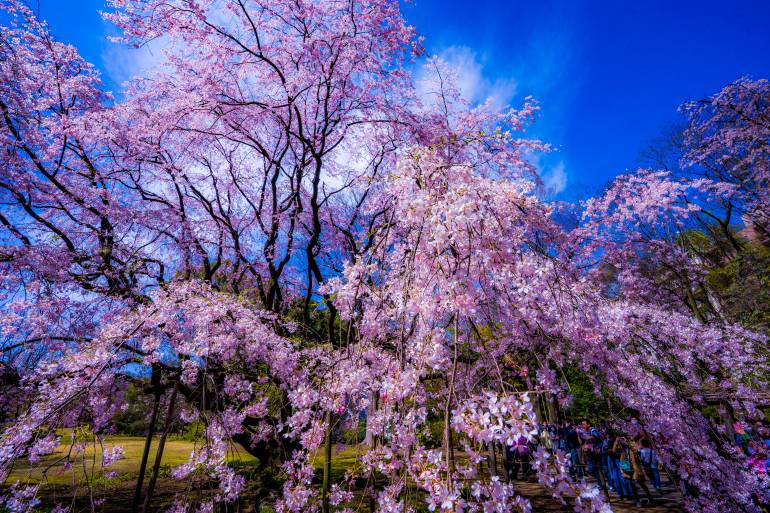
Rikugien Garden is almost four centuries old, and home to a vast and beautiful weeping cherry tree that is illuminated at night during the sakura season. While the tree is lit up, the park is open until 9 p.m. (But be advised if you’re out at night, it’s still spring and it gets chilly after dark). If you are there during the day, you can check out the garden’s teahouse.
Koganei Park
FreeAbout a 20-minute walk from Musashi-Koganei Station or Higashi-Kogansei Station
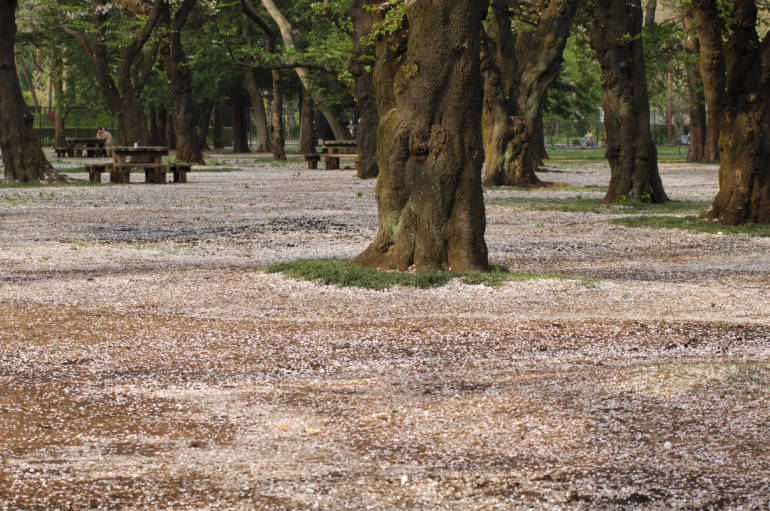
This 200-acre park is the second largest in Tokyo, and during hanami season, you can tell: the spacious lawns are a favorite spot for blossom-viewing picnics. There are upwards of 1,700 cherry trees, with over 50 varieties, including Yoshino, Sato, and wild cherry trees. If you get tired of looking at sakura or need a break from the crowds, the Edo-Tokyo Open Air Architecture Museum is nearby.
Cherry blossom day trips near Tokyo
If you’re happy to head a little farther afield, these two day trips make for awesome springtime adventures.
Tsurugaoka Hachimangū Shrine, Kamakura
FreeAbout a 10-minute walk from Kamakura Station
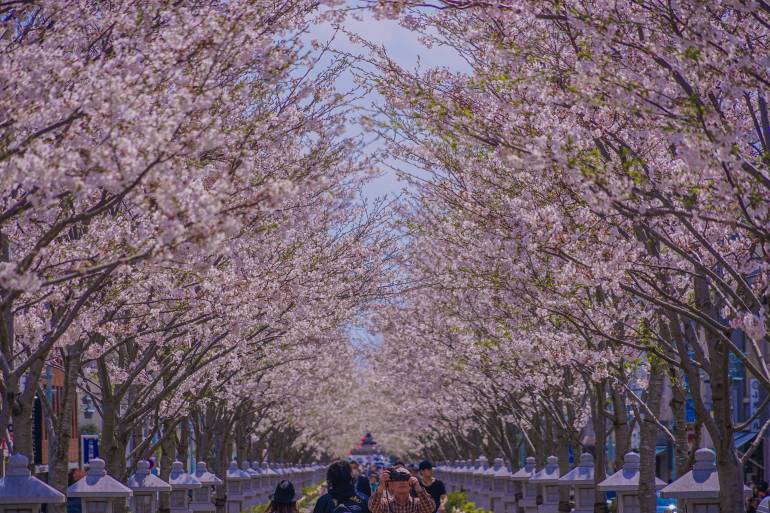
Not only is this the most important Shintō shrine in Kamakura, it is one of the most beautiful in spring as it has a 500m approach lined with cherry trees. Stroll through the grounds to find more trees near the garden ponds. These are older and include very early- and late-blooming sakura varieties — great if you’re not visiting at peak season.
The shrine is one of the top sights in Kamakura at any time of year, so you can enjoy it with an added bonus of blossoms.
Ōmiya Park, Saitama
FreeShort walk from Kita-Ōmiya Station
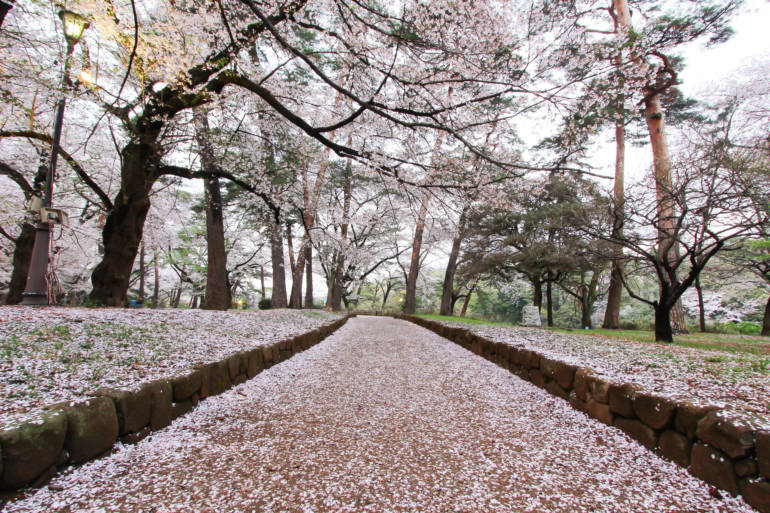
One of the top 100 spots for cherry blossoms in the whole of Japan, this park is far enough out of Tokyo that it misses some of the crowds. There are over 1,000 Yoshino cherry trees lining paths through the park, which are illuminated in the evenings. There is also a boating lake, which allows for some picturesque sakura-viewing opportunities (although you might have to queue for a spot).
On the weekends, plenty of people hold hanami parties. Ōmiya Park doesn’t close, so you don’t have to worry about being booted out just as you’re getting settled. Ōmiya is a major hub in Saitama Prefecture.
Bonus: Two little-known mini sakura spots in Tokyo
Not even official parks, these are tiny cherry blossom corners that are perfect if you find yourself in the area and wouldn’t mind adding some Tokyo sakura to your day. They aren’t exactly worth traveling for, but will definitely be quiet!
Kitazawa-gawa Green Road
A small culverted river that’s a tributary to the more famous Meguro River, this is a quiet and pleasant spot with some cherry blossoms lining the hidden waterway. Popular with local children and dog walkers, it might not be worth a trip on its own, but if you’re in the area, it is certainly worth a stroll and makes for a great picnic lunch spot.
Roppongi Sakurazaka
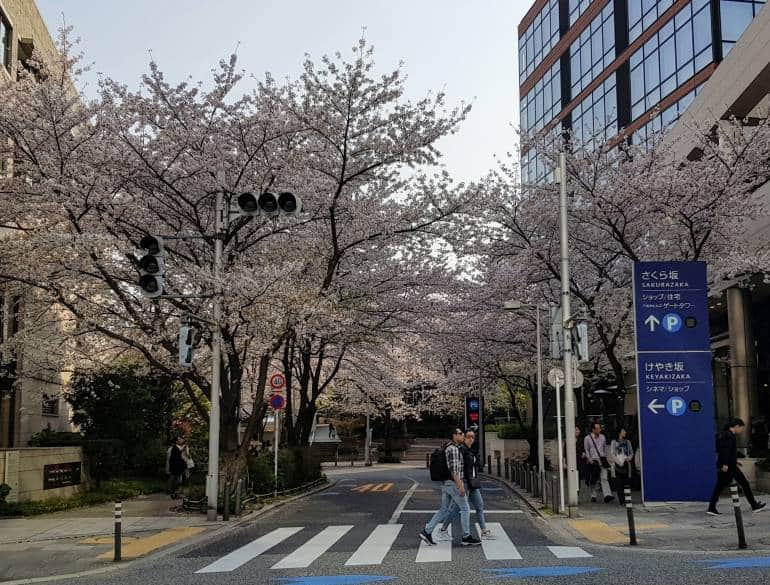
Running parallel to busy Keyakizaka, Sakurazaka is a walking path with around 75 cherry trees. Thanks to its more residential surroundings, it’s nothing like the busy cosmopolitan streets you might associate with Roppongi.
The trees are illuminated in the evenings, so if you’re out in Roppongi for the night, a nice stroll might be the perfect end to your day. There is a lot more to do in Roppongi, so you can definitely make a day out of it.
Bonus: Check out our suggestions for less-conventional ways to enjoy Tokyo sakura season.
While we do our best to ensure it’s correct, information is subject to change. This post was originally published in March 2015. Last updated in March 2023 by Maria Danuco. Special thanks to Lily Crossley-Baxter and Kylie van Zyl for their help.



